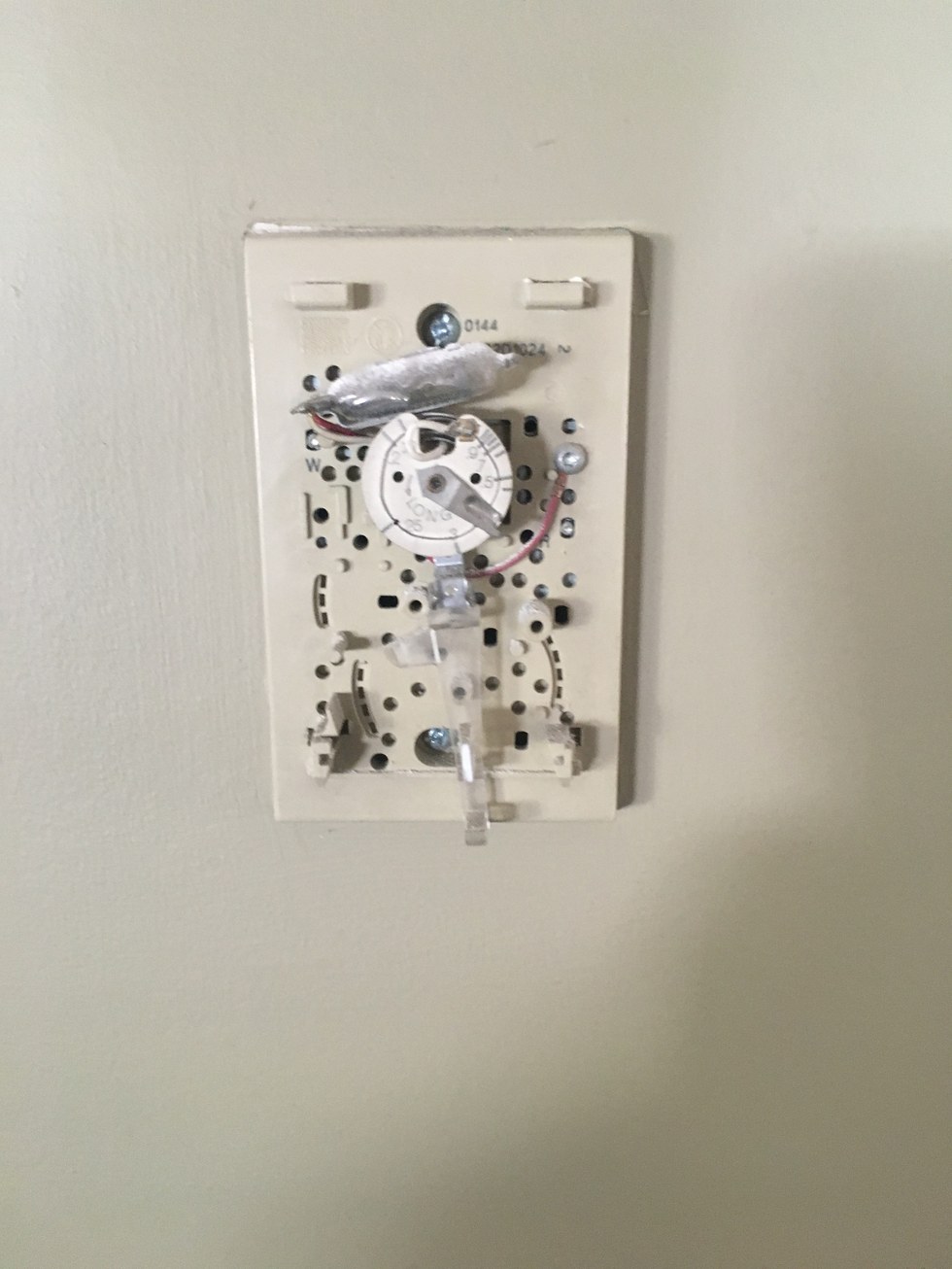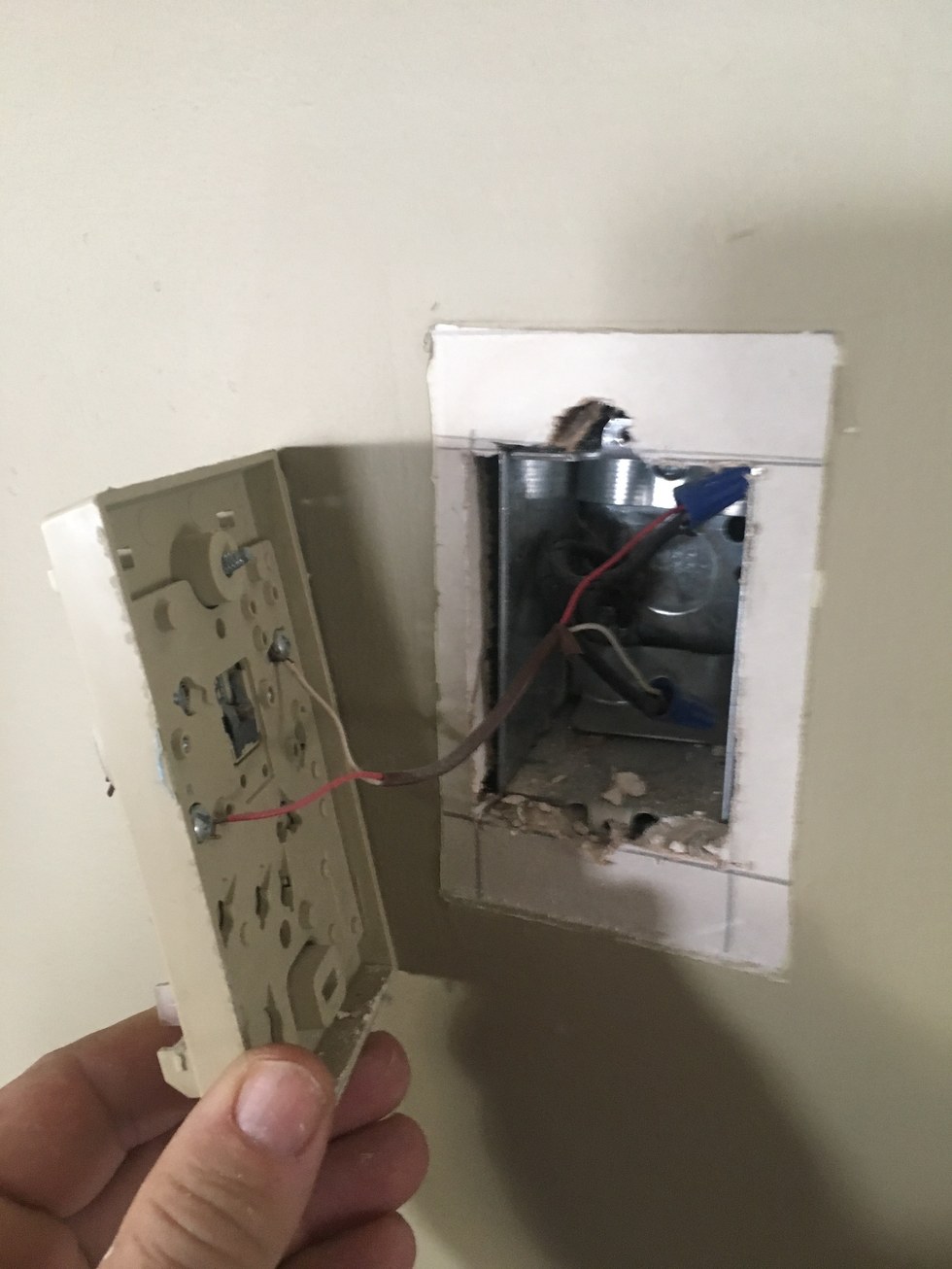The promise of building a smart home lies in how easy the devices are to connect: you can link your smart thermostat to a smart lighting set-up—all in the flip of a switch. As we talk about often on GearBrain, building a smart home can be simple, as long as you understand the details along the way. But one of those details is a little known element called a “C-Wire,” or as it’s known in the HVAC (heating, ventilation and air conditioning) industry, the “common wire.”
In learning about smart Wi-Fi thermostats and how they work, we came across this little wire and could not believe how important it was to running a smart home. The C-Wire enables the continuous flow of 24 VAC power to your smart thermostat.
Many of today’s new smart Wi-Fi thermostats require you to have this little wire to run their connected devices. But not many homes have a C-Wire, causing a lot of frustration among buyers. Why? Not many manufacturers of smart Wi-Fi thermostats inform you of the need for a C-Wire to operate their product. Also, when you purchase a smart Wi-Fi thermostat, many salespeople will tell you the device will work without a C-Wire. Yet when you go to install it, you find the thermostat will not work without one.
This happened to me, so believe me, I know your pain if this has happened to you. Thus the reason we are writing this article. We are going to help you understand more about the C-Wire—and what you need to know before you buy or install a smart Wi-Fi thermostat in your home
Standard Honeywell Thermostat – Line Voltage
Before you even buy a smart Wi-Fi thermostat, first determine the type of wiring you have between your thermostat and HVAC system or your furnace/central air unit. You either take the cover off of your existing thermostat to see if there are any wires exposed, or look at the wires inside your furnace.
When taking off the cover of your thermostat—depending how old the thermostat is—you might see mercury in a glass phial. If you do, you have an old “mercury blob” thermostat which likely does not have a C-Wire. However, to be sure, check the wire connections either on the front or back of your thermostat. (See images below.) Look inside the junction box to see if you can spot loose wires. Sometimes a C-Wire can be inside your box, but not connected to anything.
 Example of “mercury blob” thermostat
Example of “mercury blob” thermostat
After locating the wires, see if you spot only two. If so, it means you have a line voltage connection. Line voltage is the standard voltage found in outlets and junction boxes in your home. The voltage is 120 volts in US and Canada and common in older homes. Do you see three wires? Then one might be the C-Wire.
There are a few things you can do to determine if one of these three wires is a C-Wire. The wire connected to the “C” terminal on your thermostat is a C-Wire. Some manufacturers use letters like “B” or “X” to label the C-Wire or use a color wire, like green or green-yellow striped. If the wires are red and black, note those wires are hot or active wires and are not a C-Wire. However, it’s important to note there really isn’t a standard color for wire colors, so be extremely careful handling any of them.
 Example of line voltage setup for thermostat.
Example of line voltage setup for thermostat.
If you decided to look at the wiring inside your furnace, you must first turn off the power to your furnace. Then pop the cover off and look inside for the row of wires and their connections. The connections should be labeled with single letters (like R, B, C, G,…) Depending on the type of HVAC system you have, it could be very easy to see if you have a C-Wire or not. If you don’t have a C-Wire, we would recommend hiring an HVAC professional to install it. You don’t want to mess with your HVAC system even if things sound simple.
Once you determine if you have a C-Wire or not, you are ready to move forward. If you have a C-Wire, then you can proceed with buying and installing a smart Wi-Fi Thermostats. (See GearBrain’s Best Smart Thermostats for ideas on good smart Wi-Fi thermostats.) If you don’t have a C-Wire—and determined you have a line voltage system—don’t worry. You can still install a smart Wi-Fi thermostat to work in your home.
According to Honeywell, about 40 percent of the homes in the United States have line voltage today. Line voltage is largely used as backup heat in most markets, except in Quebec, Canada and certain regions (like parts of the Northwest). If you have a line voltage system, and want a smart thermostat, consider hiring an HVAC professional and have them install a C-Wire. Another option is to look for Smart Wi-Fi thermostats that works without a C-Wire. Some WiFi thermostats don’t need a C-Wire because they use power stealing; other smart thermostats offer a device called a wire saver.
There are very few line volt Wi-Fi solutions in the market today, according to Nate Kraft, senior director of Honeywell’s Global Home Comfort. Honeywell offers one, but “…we recommend a professional installer for high voltage products as a general rule, simply because 120/240V systems can pack a nasty sting,” says Kraft. “Honeywell offers a line volt Wi-Fi solution called the eConnect. When eConnect is paired with a RedLINK internet gateway, you now have an app controlled line voltage system that will work with electric baseboards and other products that use main’s voltage.”
Once you determine the type of HVAC wiring you have in your home—and are ready to get a new thermostat—bear in mind that your heating system may actually not work with a new smart thermostat. If you have electric or radiant heat in your home, you might have a problem. Today, smart Wi-Fi thermostats do not work with electric heat or certain types of baseboard heating. If you have radiant hot water heat (AKA baseboard hot water heat), it could be powered by line voltage or a low voltage circuit which “…is the common power source for radiant hot water heat, but electric heaters (radiant or baseboard) will be line voltage,” says Kraft.
Summary
Smart Wi-Fi thermostats are a popular part of today’s Internet of Things (IoT) eco-system. These devices can help make your home run more efficiently and effectively when installed properly. If you’re planning on doing any home improvements, we recommend that you consider upgrading your thermostats at the same time. You might incur additional costs if you need a C-Wire, but the benefits will outweigh the costs in the long run.
Building a smart home today is a commitment to a new connected life. Don’t be afraid of these new connected devices. GearBrain is here to educate you on the pros and cons for all these new “things” so you can easily embrace your new lifestyle. Maybe one day we won’t worry about all of this, we’ll have robots like the Jetson’s did to do all the work for us.